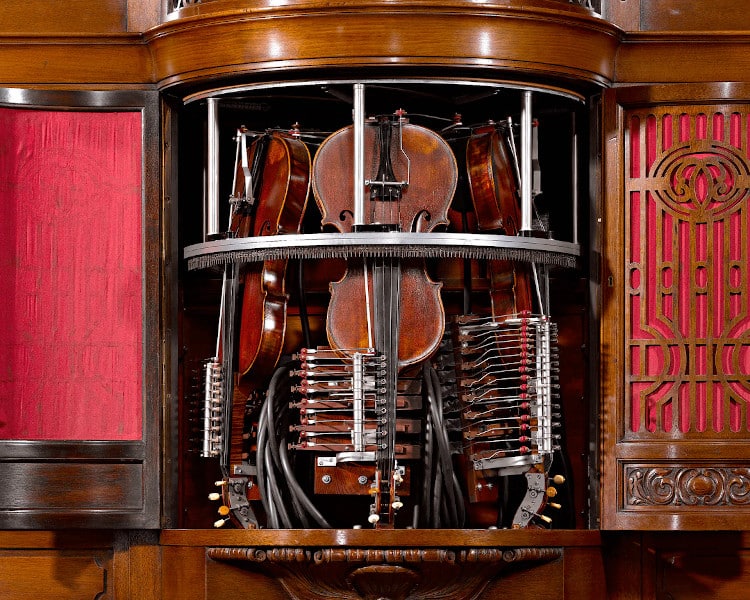
When we think of the way people listened to music 100 or 150 years ago, the first thing that comes to mind is likely the phonograph. While it was certainly a novel invention, the quality of the sound was far from ideal. And while the luckier ones maybe had an instrument at home for playing music on special occasions, the sound produced by a live orchestra was limited to the big halls—at least, that was the case until the turn of the 20th century, when a technological marvel hit the market, called the Hupfeld Phonoliszt-Violina Model B.
Among the new developments in music at that time was the pianola, a self-playing piano that operated with perforated paper or metallic rolls, which held the notes the instrument had to play for a certain melody. Building on this concept, German musical instrument maker took this creation to the next level, ultimately creating the violina. Rather than just listening to a piano, this invention gave the people within earshot an experience quite similar to a live orchestra, with three self-playing violins in tune with a pianoforte.
The ingenuity and versatility of the Hupfeld Phonoliszt-Violina Model B made it quite popular; however, its steep price tag meant that only exclusive locales got to acquire one to entertain their patrons. M.S. Rau, a New Orleans-based antique gallery, is home to one of the surviving 63 violinas in the world today, and has said it is “among the rarest and most advanced automatic music players of its time.”
“Remarkably, both the piano and the violins are dynamic, allowing for a previously unheard-of range of volume and tone.” writes the team of M.S Rau. “From the most delicate pianissimo to a crashing fortissimo, the unparalleled instrument has the ability to render musical pieces with all of the skill and vigor of a real musician.” They add that over 900 music rolls were created for the Phonoliszt-Violina over the decades.
If you’re enamored with this furniture-meets-instrument marvel, the one at M.S. Rau has a $885,000 price tag. For those of us who are definitely priced out, the gallery team have put together some videos of the Hupfeld Phonoliszt-Violina Model B in action. Just close your eyes and transport yourself to a time when this singular invention could have lit up an entire room with beautiful music.
This is the Hupfeld Phonoliszt-Violina Model B, a technological marvel from the turn of the 20th century featuring a self-playing piano and three self-playing violins.

M.S. Rau, a New Orleans-based antique gallery, is home to one of the surviving 63 violinas in the world today.
Ver esta publicación en Instagram
Hear this singular instrument in the video below:
M.S. Rau: Website | Instagram
h/t: [Neatorama]
Related Articles:
Musician Duets Herself by Covering the Eerie ‘Danse Macabre’ With an Organ and Flute
Sir Anthony Hopkins Stuns Hotel Staff With an Impromptu Piano Performance in the Lobby
How a Violin Auction Resurrected the Tragic Love Story of the Titanic’s Heroic Band Leader
